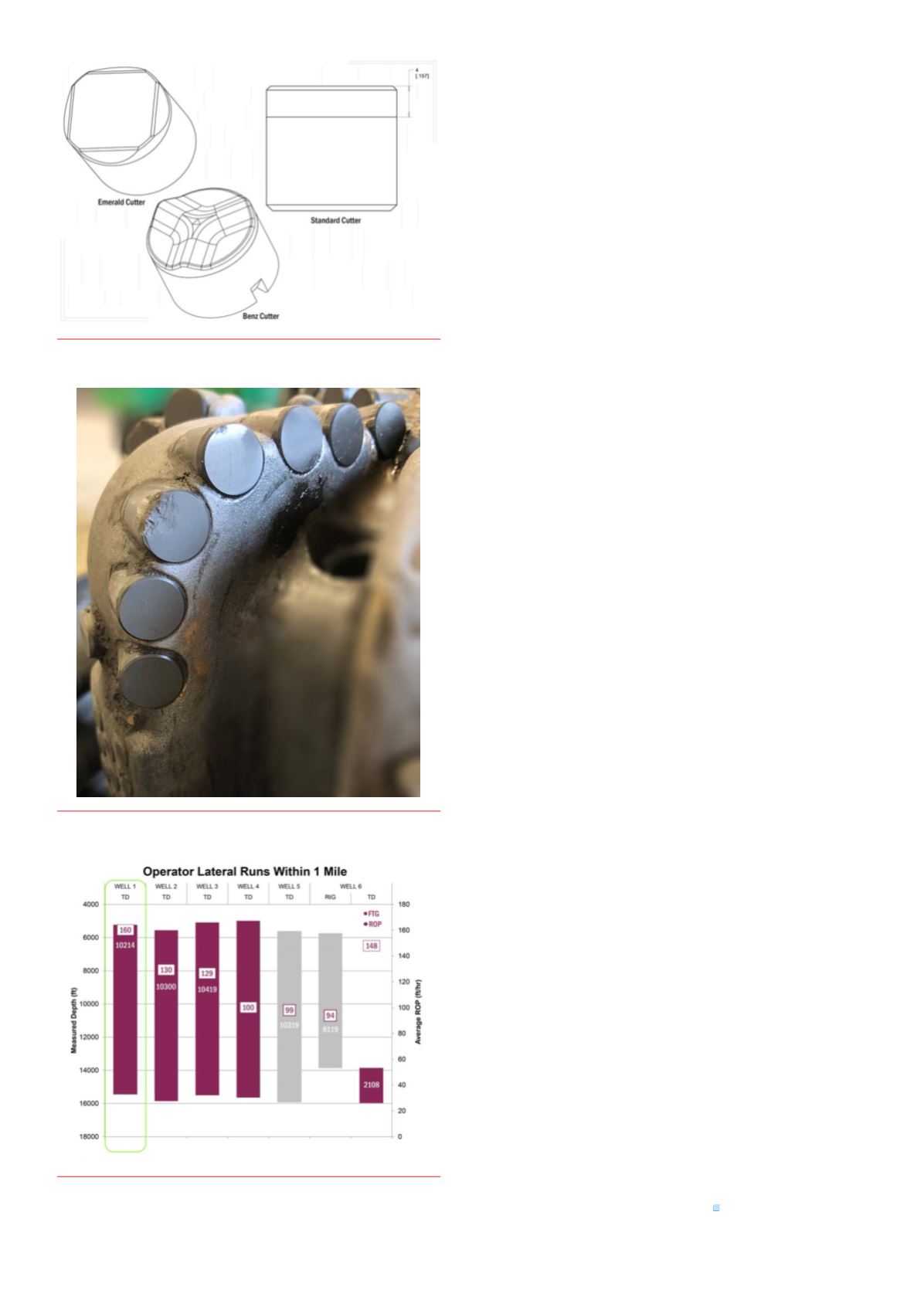
46 |
Oilfield Technology
May/June 2020
Casestudy:DelawareBasin,US
Delaware Basin and Arkoma Woodford formations have proved to
be challenging drilling environments. Customer A was running the
curve-lateral in the Delaware Basin, Reeves County. Their 6 3/4 in. bit,
outfitted with a thermally stable PDC, drilled approximately 9000 ft of
Wolfcamp A curve-lateral. The bit landed the curve and proceeded to
drill an additional 8000 ft, reaching total depth (TD) in 170 hours and
was dull graded at 1-2-CT-S-X-IN-NO-TD (Figure 2).
Casestudy:Oklahoma,US
Customer B was running the Woodford lateral in Hughes County,
Oklahoma. Their 8 3/4 in. bit drilled over 10 000 ft, averaged over
3800 ft/d at a rate of 160 ft/hr and increased rate of penetration (ROP)
by 23% over their previous record (Figure 3).
Productdevelopment
With the ever-changing financial stresses in the market, it is essential
to develop a product that will not only perform but also delivers value
for the consumer. Collaboration with numerous companies has yielded
knowledge from field data and a greater understanding of how the
PDC performs downhole. After collecting, analysing, and evaluating
the field data, a second generation of products has been developed:
All-Terrain, Tactical, and Elite. These series utilised the company’s latest
technology in order to provide an enhanced, customisable PDC to
cover multiple facets of hard-to-drill environments.
The All-Terrain series, with an updated press sintering method, is
designed to tackle three key performance aspects: thermal, abrasion,
and impact. The balance between these three characteristics is crucial
to determining how the products in this series perform downhole.
The design concept behind the Tactical series was to develop
products that are focused on specific performance requirements for
niche drilling environments. Some cases require a cutter with more
thermal stability, while others require a higher abrasion resistance
cutter. Depending on the application, this range emphasises specific
aspects of those thermal, abrasion, or impact resistance needs.
The Elite series was designed with an updated press method.
Performance was improved based on numerous results from extensive
Instron and VTL testing. This enabled the development of a product
that has a higher resistance to thermal degradation, crack expansion
and crack propagation, along with improved interfacial stress relief.
Leaching
PDC leaching technology is used to provide improved thermal
stability in cutter performance by removal of catalyst material. This
is critical to product performance downhole. Over the last 15 years,
IDS has tested, developed, and implemented a method to remove
catalyst metal: metals are removed from the sintered diamond layer
at depths exceeding 1000 micro, and a proprietary masking technique
maintains the substrates’ structural integrity. Non-destructive testing
methods ensure accurate measurements of leach depth that conform
to individual customers’ needs.
Outside of the PDC realm, the company manufactures newly
designed diamond-impregnated inserts, with the capabilities/abilities
to supply coated and non-coated TSPs and a variety of synthetic and
natural diamond stones for various applications.
Conclusion
The industry continues to discover numerous techniques that
enhance the overall performance of a drill bit. Products are being
manufactured that can individually target a customer’s drilling needs
for thermal, abrasion, or impact resistant cutters and subsequently
improve drill bit performance in the field.
Figure 2.
A 6 3/4 in. bit usedby a customer in theDelawareBasin showed
minimal PDC cutter wear when utilisinga thermally stable PDC.
Figure 1.
Deep leached, thermally stable andwear resistant cutters are
designed to operate in challengingdrilling environments.
Figure 3.
The chart outlines the previous run comparisons froma
customer operating in the ArkomaWoodford lateral.








